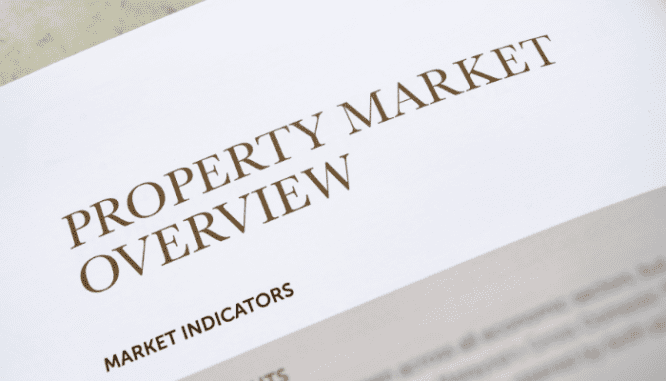Thinking of Investing in Real Estate? 3 Normal People Spill the Beans
- Published on
- 5 min read
-
 Dena Landon Contributing AuthorClose
Dena Landon Contributing AuthorClose Dena Landon Contributing Author
Dena Landon Contributing AuthorDena Landon is a writer with over 10 years of experience and has had bylines appear in The Washington Post, Salon, Good Housekeeping and more. A homeowner and real estate investor herself, Dena's bought and sold four homes, worked in property management for other investors, and has written over 200 articles on real estate.
If you’ve been researching how to grow a passive income stream, you’ve probably stumbled across real estate investing. Die-hard fans of HGTV shows know all about flipping — the investing strategy of buying distressed properties, fixing them up, and selling them for (supposedly) huge profits.
But what’s the reality?
House flipping shows often don’t include closing costs or other expenses in the final numbers, leading people to believe that the flippers made a higher profit than they really did. And the other investment strategy, buy-and-hold (renting your investment home out either short-term or long-term) also has its challenges. Landlords have to deal with sticky situations — like evicting a tenant for non-payment.
Don’t you wish you get the plain, unvarnished truth from someone who’s been there, done that?
You can! Here are three real-life people and their stories on how they started investing in real estate.

Buy and hold landlord: Chris G.
When Chris G. bought his Anderson, South Carolina, home back in 2008 just before the recession, he had no intention of becoming a landlord. The home was near his work, the government had offered significant tax breaks to buy, and he wanted a home for his family. But fast forward to 2013, and through a divorce, and he wanted to sell.
He had one problem, though. “Due to financial struggles through the recession, I’d had to refinance,” he explains. “I didn’t have a lot of equity. The housing market still wasn’t great for sellers, and I didn’t feel like I was going to turn a profit.” So he decided to rent the house, build more equity, and wait for a better market to sell.
Investors who practice a buy-and-hold strategy hold onto an investment property and rent it out to help pay the mortgage until it appreciates enough in value to return their profit when they sell.
Chris bought the house for $112,000, and with the refinance, his mortgage payment is $640 a month. With rents between $950 and $1,025 a month, he admits that he doesn’t make much money on rent, and some years he’s lost money.
“In August 2019, the HVAC gave out completely. It was $10,000 right out the door to install a new system,” he says. It ate up all his profits for the year, plus some savings. He also had to evict one tenant for non-payment.
At the moment, the market estimate for the home places its value at about $150,000 to $160,000, so it’s gained roughly $48,000 in value.
Experienced investors recommend that when you purchase a home, you make sure that you’ve got enough equity in the property to weather any possible market shifts. If you can purchase a house for under its actual market value, or put down a large amount for your down payment, then you’ll be in better shape, equity-wise, than an investor who pays top dollar for a house with a minimal down payment.
He’s happy that he decided to hold and rent the property, and he has plans to do it again with the home he’s currently living in.
His best advice to would-be investors? “Learn how to vet your tenants, and use third-party tools to do proper background checks.”

Investing in REITS: Andre Albritton
“Basically, a REIT is a company that focuses on a niche of real estate,” Andre Albritton explains. Each real estate investment trust (“REIT”) is a company that focuses on acquiring a type of real estate, such as hotels or hospitals, and then individual investors buy into the company.
“They make money when tenants pay rent, just like being a landlord,” says Albritton. Those payouts are dispersed to investors as dividends, just like owning a dividend-paying stock in your portfolio.
He first became interested in REITs when working at a financial firm. Even though conventional wisdom held that people should invest in real estate to spread risk and take advantage of appreciation, he noticed that many high-net-worth clients didn’t own second properties. Instead, they’d bought into REITs.
With a REIT, they could have exposure to this part of the market while minimizing their risks. He decided to try it, investing in a REIT in senior housing.
“My thought process behind it was that the silver wave — a new generation retiring soon — would need some type of palace to live,” he explains. But the company didn’t do well and had to rebrand several times. His initial $400 investment has gone down about 60%.
Albritton still holds the stock as a reminder to do a better job investigating investment opportunities. But he also thinks that the small amount of money he put in is part of why REITs are such a great way for many to enter real estate investing.
“The average person doesn’t have $10,000 or more sitting in an account waiting for them to spend it,” he says. “It’s really hard to get involved in real estate, but you don’t want to miss out.” To him, REITs are the solution. The lower price to buy in also means less risk than buying a duplex or apartment complex.
This year, he bought into REITs that invested in hotels just as COVID hit. “REITs are very basic thinking things,” he says. “Invest in them when they’re low, sell high.” His investments in March and June jumped 30% in value months later, in November, as news of a potential vaccine broke and people are starting to see hope of an end to the pandemic and think about traveling again.
He wishes more people knew how easy it is to do, because “people hear the word ‘REITs’ and it’s something they’re not used to; they overcomplicate it. At the end of the day, it’s just another stock.”
He advises finding a REIT that you like and think will have longevity for the future, and then holding onto it, benefitting from compound growth, and supplementing your income with the dividend payouts.

House flipping: Elisa Covington
Back in 2012, Elisa Covington bought her first home with a down payment she’d saved from her job as a yield manager. “It was a short sale,” she explains, “so the house wasn’t in the best condition.” After doing the minimum work to make it livable, she moved in and rented out her second bedroom, becoming a part-time landlord.
Home values went up in the area, and within a few years, she was able to take out a home equity line of credit and use that money to purchase her first rental property. It was a slow flip — it took her a year to remodel, and she rented it out briefly before selling it for a 40% profit. But remodeling two homes had made her real estate investing path clear.
“Because of my experience in buying fixer-uppers, remodeling them, and selling them later on, I learned that I enjoy this,” she says. Being a landlord wasn’t for her, but flipping was a great fit.
Since becoming a full-time flipper in 2017, she’s done more than 20 flips. She uses hard money loans (short-term loans intended to be paid back in six months or less) to finance 80% to 90% of the purchase price and her own money to fund the remaining 10% to 20% and the remodel or renovation costs. While she knows that some investors prefer to roll the remodeling costs into the loan, she’s not a fan of that strategy.
“Using hard money loans [for remodeling costs] can delay the payment to your contractor,” she explains. After the first phase of the work is done, you have to notify the lender; they send out an inspector, and if they’re okay with the progress, they’ll release the funds to pay your contractor. It can put the project behind schedule.
She’s only lost money on one flip. The market was hot when she bought the house, but it cooled during the time she was remodeling it. Plus, she was trying to sell it for $1.5 million, but high-end homes are harder to sell in cooler markets. That house sold for $170,000 less than she’d thought it would, and she lost $50,000.
Cosmo Spellings is an agent specializing in real estate owned (REO) properties in Florida. He often works with investors trying to buy cheap houses that have gone into foreclosure to flip them. He says that a change in market conditions can really hurt them.
“I’ve had investors pay top dollar just to sink $20,000 to $30,000 into it, turn around, and only make $20,000 or $30,000 on the rehab,” he says, when they might have made $75,000 on the same property with the same upgrades three years earlier.
The experience taught Covington to be more conservative.
“Now I try to use comparable sales that are on the lower side,” she says. “I also try not to buy flips where the required sale price is higher than the median sale price in the area.” If there’s a high comp (comparable recently sold home), she throws it out and always chooses a different one from the mid-range.
She celebrated her first seven-figure profit year in 2019, which means that she built a million-dollar business in just three years. She says that, for her, the key to success is that, “I love what I do, and it doesn’t feel like work to me.”
Whether you get into real estate investing by buying a bank-owned home, start small with a REIT, or rent out your spare bedroom, these stories show that there’s more than one way to become an investor.
Header Image Source: (wut62 / ShutterStock)
